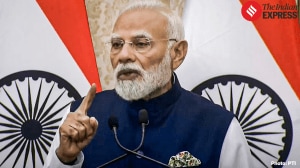JNU, UGC fight over research grants
NEW DELHI, JAN 15: Jawaharlal Nehru University and the University Grants Commission (UGC) have found yet another issue to fight about. Wh...

NEW DELHI, JAN 15: Jawaharlal Nehru University and the University Grants Commission (UGC) have found yet another issue to fight about. While the JNU claims the UGC has reduced its project grants, the UGC candidly admits that the government is not keen to invest in test-tube research. Instead, the government is focussing on applied research so that it can reap benefits once the product is out in the market.
The UGC has asked JNU to generate its own funds, which it has not been able to do. With the university depending primarily on the Union Government for funds, the grants for research projects seem to be stagnant. Funds from the private sector are nowhere in sight. Instead, the grants for research projects during 1997-98 decreased to Rs 3.9 crore from Rs 4.4 crore in the previous year.
The annual research grants for JNU have been stagnant between Rs 3 and Rs 4 crore for the past decade. The JNU project cell attributes the stagnation to the decline in grants received from their primary funding agencies.For instance, the Union Department of Biotechnology gave grants worth Rs 1 crore in 1998 while it had given approximately Rs 2 crore in the previous year. The UGC reduced its grants by half in 1998 as well. It had given Rs 11.6 lakh as grants for research projects during 1996-97, but gave only Rs 6.5 lakh in 1998.
Dr R K Chauhan, secretary (Central Universities) told The Indian Express, “We give grants for research projects at JNU on an individual basis. The UGC has to approve every project that a JNU teacher puts forth, before providing grants. We have provided less money because the UGC did not approve of certain research projects.”
A senior UGC official argues on condition of anonymity, “We understand that it is important to explore philosophical subjects for the development of academics. However, when the funds are scarce, it will definitely receive secondary importance.”
Other UGC officials attribute the reduction to diversion of funds by the government. Additional secretary (UGC) Dr G GDandapat said, “Whenever there’s an urgent need for funds, money is diverted from funds earmarked for higher education. Today, it is politically correct to lay emphasis on elementary education. The Ministry instructs UGC to cut down on funds for universities.”
The social sciences schools at JNU are not the primary recipients of project grants. The School of Life Sciences receives the maximum grants for research projects at JNU. Says Professor Rajendra Prasad, School of Life Sciences, “We want private firms to provide us grants. But there are various limitations and no one comes forward. We do not have a professional body which would arrange grants for research projects as is the case at IIT. The grants we receive are individual-based.”
JNU undertook 174 projects in 1998 as against 188 in 1997. The number of fellowships also declined from 312 to 292 in 1998. According to reliable sources at the JNU project cell, the grants are stagnant because “neither the government nor private firms want to investin test-tube research. They want to put in money for applied research so that they get benefits immediately and the product can be seen in the market. This is the reason why grants for research projects at professional institutes like IIT are at an all-time high while we are stagnating.”
Amongst the prominent non-government and autonomous agencies that fund JNU are the World Health Organisation, University of Carolina, Potts Memorial Foundation and the United States Department of Agriculture. However, the grants provided by them are not substantial.
A faculty member at the School of Life Sciences discloses, “We have not managed to get any major projects in the past few years. A substantial amount of project money is spent on buying laboratory equipment and the required chemicals. We are facing a resource crunch.”



- 01
- 02
- 03
- 04
- 05




























